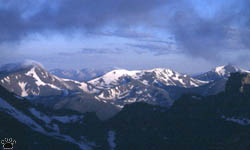
Ruby Mountains, Nevada.
Part 16. The Great Basin.
| As you move west from the Colorado Plateau or
the Rocky Mountains, you have to cross the Great Basin - a few hundred miles of
sage deserts and dry mountains, the most desolate part of the United States outside
Alaska. There is only one small national park there, and most tourists try to
pass it as fast as possible. |

Ruby Mountains, Nevada, October. |
Some remote areas are almost never visited by people. |

Ruby Mountains, March. |
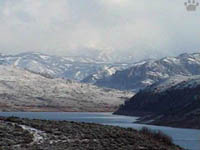
Borders of the Great Basin are difficult to define.
Areas of similar habitat are scattered throughout
the West. Gunnison Valley, Colorado. |
There are many interesting things to see in the
sagebrush country, but, except for jackrabbits, coyotes, hawks and kangaroo rats,
they are not common on paved highways. Sage grouse are
probably the most interesting. |

Sagebrush-covered Gunnison Valley in the heart
of the Rocky Mountains has a lot of Great Basin
species, including a smaller, endemic sage grouse. |
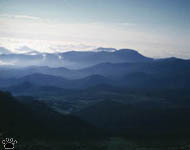
Confusion Range, Utah. |

Ruby Mountains, December.
There are over 50 mountain ridges in the Great Basin. |
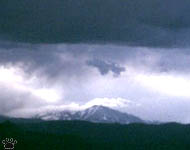
Mahogany Mountains, Oregon. |

Sunrise view of Alvord Basin from Steens Mt., Oregon |
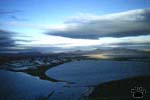
View from Hart Mt., Oregon |
One of my favorite places in Great Basin is Hart
Mountain Antelope Refuge, Oregon, and Steens Mountain close by. It has some of
the best views, and lots of wildlife - from pronghorn to tiny endemic fish in
hot springs. |
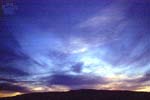
Desert sunset, Oregon |
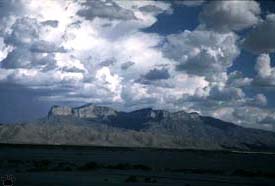
Hart Mt. Escarpment, Oregon |

Warner Lakes near Hart Mt., Oregon |

Porcupine,
Hart Mt., Oregon.

Porcupine, Newberry
Caldera, Oregon. |
If you spend many nights driving along dirt roads
in Hart Mountain Refuge or other remote part of Great Basin, sooner or later you'll
encounter some of the cutest desert creatures: kit foxes (Vulpes macrotis),
pygmy rabbits (Sylvilagus idahoensis), kangaroo mice (Microdipodomys)
and rats (Dipodomys), badgers (Taxidea taxus), porcupines (Erethizon
dorsatum), even river otters (Lontra canadensis) in appropriate habitat.
The best time is just after sunset, then around midnight and again just before
dawn. The first hour after sunset is also the time to look for snakes and other
reptiles on paved roads during warm summer nights, or for amphibians after rain.

American badger,
Steens Mt., Oregon |

Kangaroo rat D. ordii,
Sheldon NWR, Nevada. |

River otter, Newberry
Caldera, Oregon |
|

Porcupine, Newberry
Caldera, Oregon.
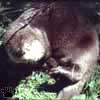
River otter, Newberry
Caldera, Oregon |
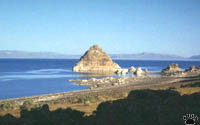
Pyramid Lake and Island, Nevada. |
Some of Great
Basin's lakes are very interesting, such as Pyramid Lake in Nevada. It is fed
by Truckee River from Lake Tahoe. Unfortunately,
this river is now almost used up for irrigation. |
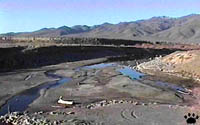
Truckee River in May, Nevada. |


Chui-ui (Chasmistes cujus),
Pyramid Lake. |

Tahoe sucker (Catostomus tahoensis), Pyramid Lake.
Water shortages are endangering the unique fishes of the lake, such as endemic
chui-ui, and the World's largest trout, which spawn in the river. The fish stocks
are, in turn, critical for survival of North America's largest pelican colony,
as well as of local Paiute Indians. |
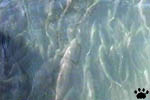

Lahontan trout (Onchorhynchus
clarki henshavi), Pyramid Lake. |
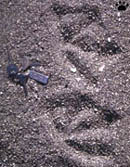
Pelican tracks, Pyramid Lake. |

Pelicans, Pyramid Lake.
 |

Pelicans, Pyramid Lake.
 |

Pelicans, Pyramid Lake.
 |
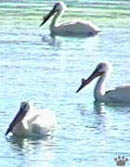
Pelicans, Pyramid Lake. |

Morning in Hells Canyon, Idaho.
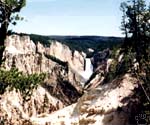
Yellowstone Canyon, Wyoming. |
From the North, the Great Basin is bordered by
a vast nameless country of lava plateaus, deep canyons and densely forested hills.
Sandwiched between Rocky Mountains to the East and the Cascades to the West, this
area stretches all the way into Canada, where its beautiful northernmost part
is called The Okanogan. Most of this country belongs to Columbia River Basin.

Columbia Plateau, Washington. |

Morning in Hells Canyon, Idaho.

Snake Canyon, Idaho. |

Part of The 1000 Springs, Idaho. |
Some interesting places of this area are almost
completely unknown to outsiders, such as The 1000 Springs - a chain of huge waterfalls
and smaller springs bursting out of Columbia Canyon cliffs. |
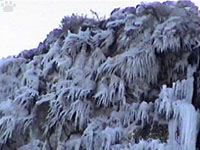
Frozen springs, The 1000 Springs. |

The Okanogan,
British Columbia. |

Crooked River
Canyon, Oregon. |
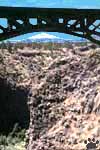
Crooked River
Canyon, Oregon. |
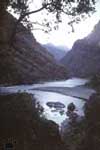
Hells Canyon,
Oregon/Idaho. |

Hells Canyon,
Oregon/Idaho. |

Yellowstone
Canyon, Wyoming. |

Columbia River Gorge. |
Columbia, the largest river of the West, flows into the Pacific Ocean, crossing
the Cascades through Columbia River Gorge.
|
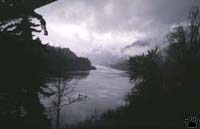
Columbia River Gorge. |
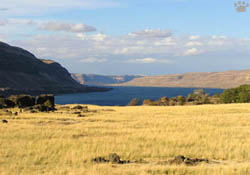
Columbia River, Oregon/Washington border. |
The gorge has been converted into a chain of reservoirs,
but still looks spectacular. |

Columbia River, Oregon/Washington border. |
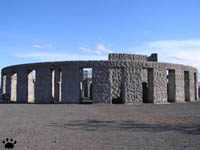 |
Traveling in the USA, you often run into surprises. This life-size
reconstruction of the Stonehenge is in Columbia River Gorge, on the Washington
side. |
 |

|
 |
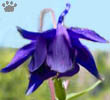 |
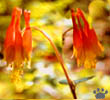 |
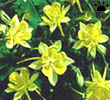 |
Western columbines: larger photos
- Aquilegia coerulea (above), A. chrysantha; upper row: A. formosa,
A. jonesii, A. triternata, mid. row: A. chrysantha, A.
flavescens, bottom row: A. saximontana, A. pubescens. |
 |
 |
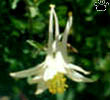 |
 |
|
 |
 |
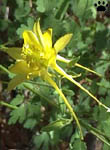 |

20' (6 m) long white sturgeon,
Columbia River Gorge, Oregon. |
Freshwater fauna of the West is far less diverse
than in the East. Still, the most impressive inhabitant of this area is white
sturgeon (Acipenser transmontanus). The only place where these shy giants
still survive in good numbers is lower Columbia River. |
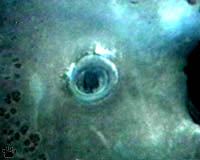
Eye of a giant white sturgeon,
Columbia River Gorge, Oregon. |
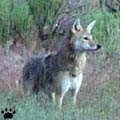
Coyote (Canis latrans), Timpahute Range, Nevada.
Part 17. The Pacific Northwest
Back to Part 15
Home
|